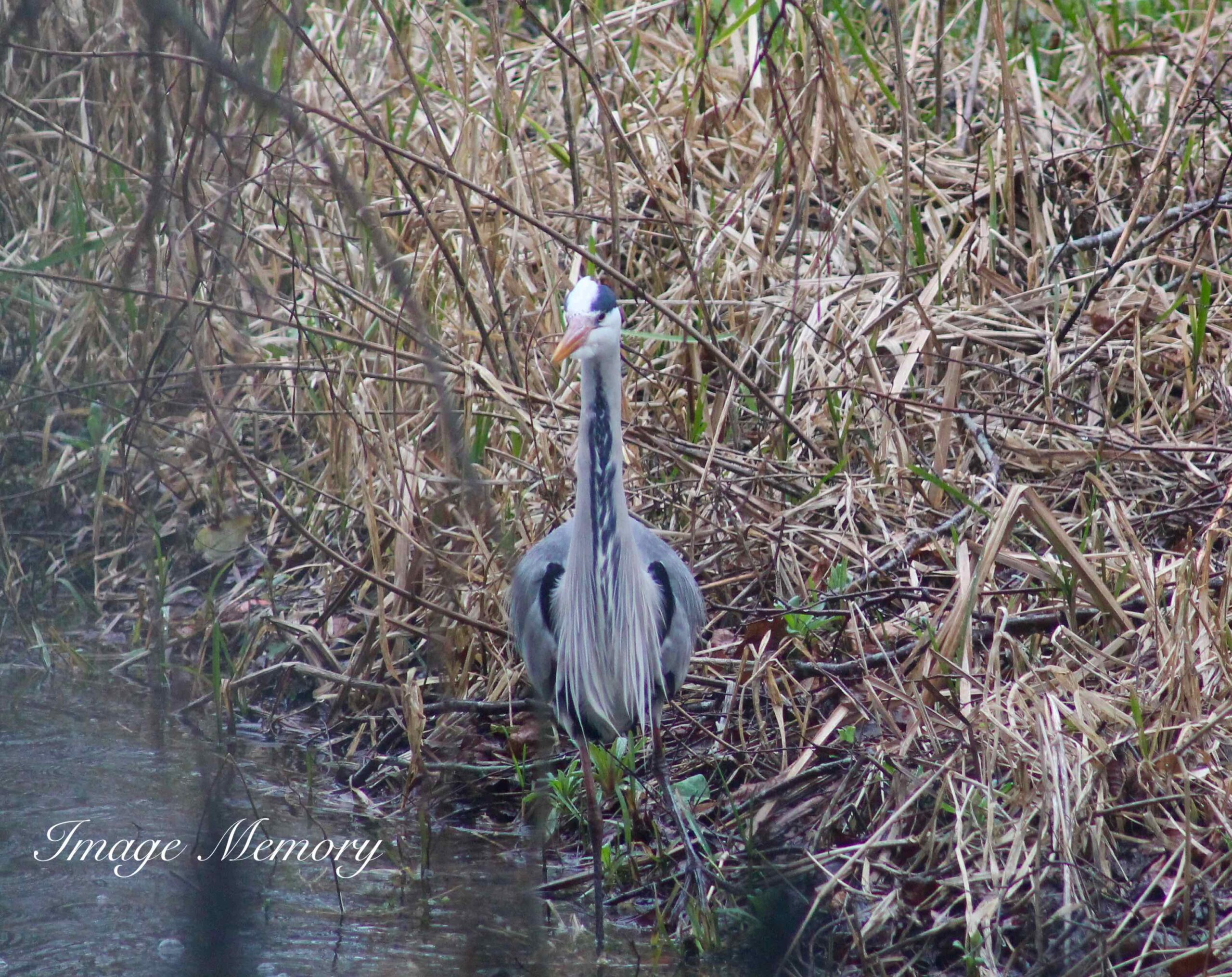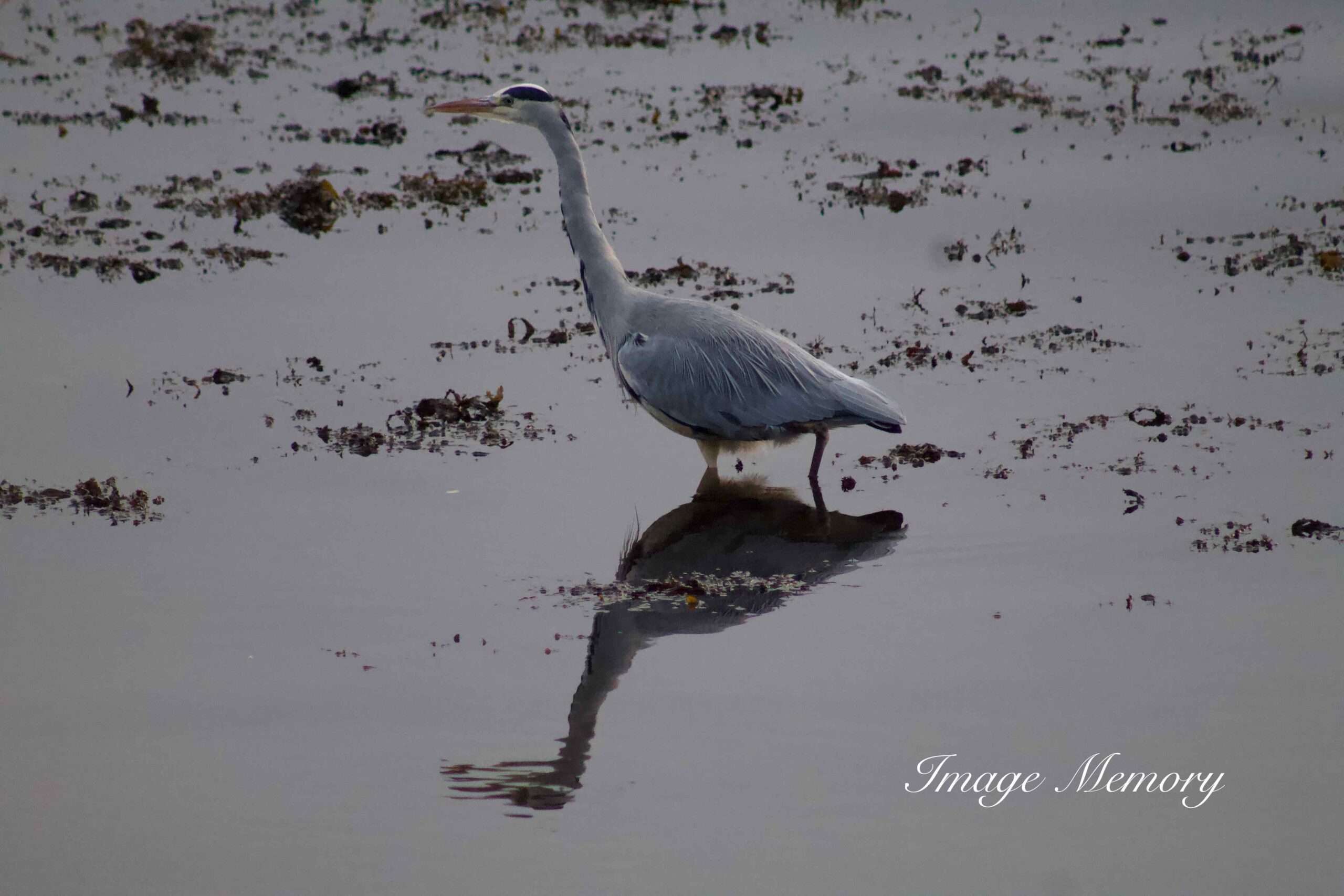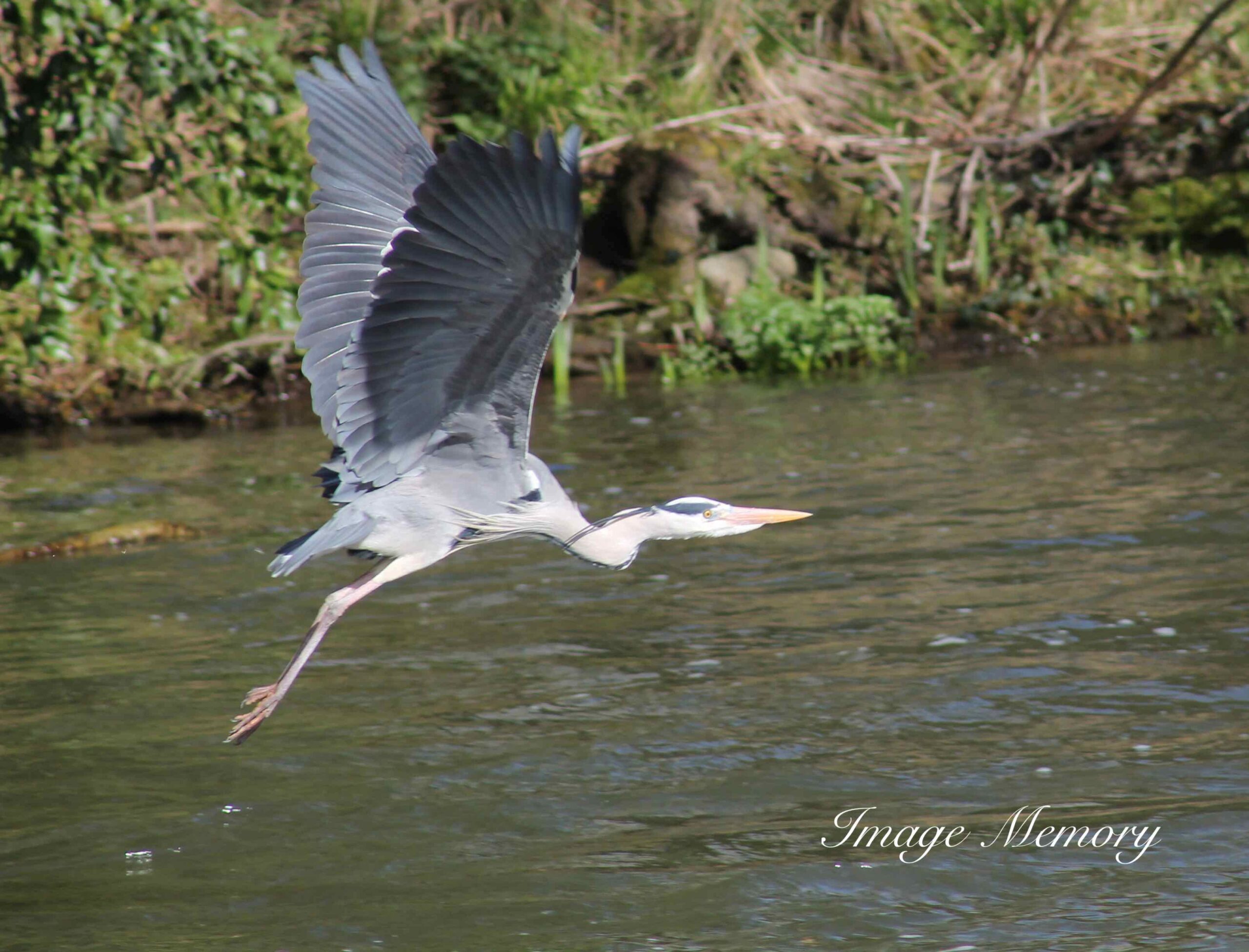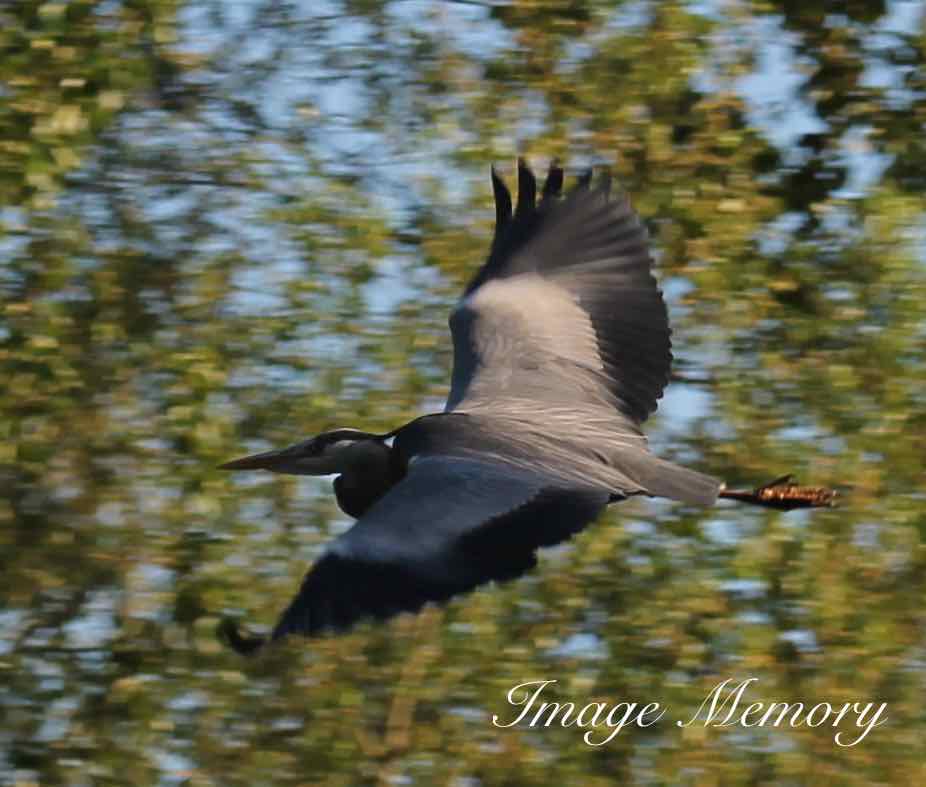When we first moved to Burghfield we were amazed at the wide variety of bird life, particularly aquatic, that live around the Kennet and Avon Canal and local stretches of water.
One of the most amazing species of bird that we have observed is the heron. It is a very tall bird, with strange strands of feathers at the front, that make it look somewhat unkempt.

Fiona and I continually discuss the extraordinary features that this sizeable bird has. Their quirks include a bendy neck that it retracts when flying. This is unlike other birds, like swans and geese, that straighten out their necks in front of them when in flight. The heron has 20 to 21 cervical vertebrae in its neck, which makes this possible.
They look like cloaked school masters in profile. Or the poem ‘Haegri’ (Shetlandic for Heron, please click on ‘Haegri’ for the full poem) by Roseanne Watt aptly describes her heron as ‘curled like a question mark’. They are one of the few species of birds that are prehistoric. I must admit they don’t look like a bird from this epoch when they fly, watching them makes me feel I have been transported millions of years back in time.

The heron is reluctant to take off because they weigh up to 2 kilograms and are up to 98cm in height, with feathers that provide some resistance to flight. Consequently, a big wingspan is required and this measures up to a full 1.95 metres.
An adult heron needs around half a kilogram of food per day and they will continue on the hunt till this target is reached. They eat fish, voles, frogs, eels, insects and young birds, like ducklings for example. Mind blowingly we have seen a grown heron fly towards a mink in a distinctly aggressive way.

I am also convinced that the heron was the model for the birds in the Avatar films (please click on Avatar video clip for the plumes). If you look closely at the photograph above, you can see a long dark plume of feathers trailing behind its head. Their plume is like the reins that the avatars used to ride on the backs of magnificent birds depicted in the movies.
Please see photo below that shows the heron with neck fully retracted in flight.

Herons are also very solitary by nature. I have only ever seen them on their own. Of course, they must find a partner in Spring, or the numbers would deplete quickly! The female will lay up to 10 pale blue eggs and both parents incubate the eggs for 25 days.
Sources of information include:
https://community.rspb.org.uk/ https://www.everyheron.com/
hugo.richardson@image-memory.com
Photographs by Hugo Richardson
Tel. 07476 343 777
What a fascinating read. Heron is truly a creature from pre-history and your photos really capture their unique beauty.